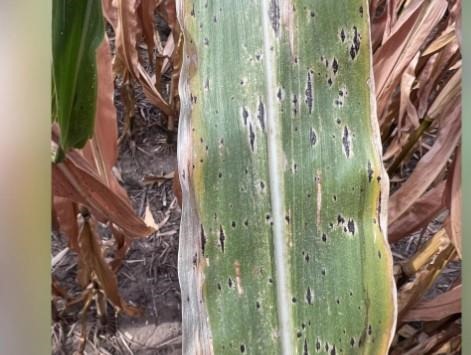The fungal disease attacks leaf tissue in corn and can rapidly deteriorate the plant. According to the Crop Protection Network, it is estimated that it caused farmers to lose around $3 billion in the United States from 2018 to 2021 and has the potential to be more destructive in states that are just now seeing cases.
“It's a significant disease. It can cause a significant loss to our growers, so I think that's the main concern right now,” Onofre said.
The fungal pathogen that causes the disease survives over winter, meaning that the disease won’t go away.
“Once you have it, you're not going to get rid of it. It's going to stay on that corn residue in that field,” said Mandy Bish, integrated pest management coordinator at the University of Missouri.

Tar spot is found on both healthy and dead plant tissue.
Since it’s still early, farmers will have to wait to see how much of an effect tar spot will have in states where it’s just appearing. It thrives in mild temperatures and wet leaves.
“We're learning some of those environmental conditions,” Bish said, “so we know that in 2018 and 2021 we had really bad outbreaks in those states that caused significant yield loss, whereas in 2020 and 2022 the environmental conditions weren't as favorable.
Both Onofre and Bish said there are ways to manage tar spot. Farmers can prepare this year by choosing corn hybrids that are more resistant. The disease can also be managed using fungicides.
“What I try to tell our farmers in Missouri is we don't want to make fungicide applications out of fear,” said Bish. “We want to scout, but we also don't want to be complacent.”
Click here to see more...